Hyena (1993) #1-4 edited by Mark Martin
This is a magazine that passed me by at the time — it’s the sort of thing I would have bought if I’d known about it, but as the first three issues were published by Tundra, perhaps they just forgot to tell anybody about it.
Heh heh. I want a clothes shaver shaver!
So — this is a humour anthology edited by Mark Martin. It’s more chaotic than what I’d expect from him: He’s so meticulous in his own work.
The aesthetic they seem to be going for is a mix of old school underground comix and more early-80s punk stuff, I guess? The Pee Dog strip is credited to Eddie Jukes and Jocko “Levant” Brainiac 5, which I guess has to be Jay Cotton and Gary Panter? But it looks nothing like Gary Panter at all, so I’m wondering whether Cotton did it himself? Or… somebody else?
The magazine also has text pieces or varying types. (And Sam Henderson — I think he was in all anthologies at the time.)
One real surprise is this surprisingly nasty booklet by Walt Holcombe, which makes me wonder whether there was an editorial edict of some kind in place. That is, has everybody been told to try to get as many murders, mutilations and poop jokes in as possible? Or did it happen naturally?
Some people do their totally normal stuff, though, like Roy Tompkins.
The main attraction is, of course, Jim Woodring, who delivers two longish stories over the four issues. (Well, six to eight pages…)
Mack White does some stuff that’s, again, not typical for him. (But he did reprint this material in his one man anthology later.)
“P. Revess” does a couple of chaotic pages that (and this seems to be a theme here) are very different from what Peter Kupperman usually does. It’s funny, though.
These are the only two letters that appear on the letters pages, and I guess Bradley was offended by the first issue. So: Mission accomplished! Is my guess.
Just when I think I’ve got the aesthetic pinned down, we get Mark Campos with a non-gross story.
Terry LaBan shows us that the little engine can’t.
Oh, right… Rick Grimes…
But what is this! Yes, it’s a Joe Matt/Chester Brown/autobio parody, and this came as a shock — not because of the contents, but because reading this mavazine, I’d totally forgotten that it was published in the early 90s. It feels so much like an early 80s thing that this reminder that we’re in the 90s came as a surprise.
The story is credited to Sherwin Mudflapp, so whoever did this wanted to be anonymous, I guess? Is it really too controversial? It seems like a by-the-numbers autobio ribbing thing…
I tried googling who Sherwin Mudflapp could be, but found nothing. It doesn’t look like Sam Henderson, does it? Could it be Terry LaBan? Hm… the style somehow looks really familiar, but I can’t put my finger on it… Anybody?
Heh heh. That page ran as an actual ad in the Comics Journal, and it’s a very to-the-point parody of the Gary Groth/Todd McFarlane interview.
Mary Fleener! And this seems to be the only page by a woman in these 200 pages.
Another reminder we’re in the 90s — a Twin Peaks parody by Todd Camp/Michael H. Price.
The longest piece in the series is this thing by … er… Baxter? It can be a challenge to find out who did what in some issues…
And it’s a pretty puzzling piece.
OK, I don’t know what this is about either. (Brian Sendelbach.) But it’s a solid joke.
The final issue is published after Kitchen Sink “bought” Tundra, and seems to be more laid back, somehow? But it’s also more of a collection of odds and ends — perhaps things that had been submitted to Martin?
Steven Bissette was interviewed in The Comics Journal #185, page 54:
As I said, Taboo #4 was done with the help of Tundra,
and Taboo #5 was the first co-published issue. There was
a very strange conversation I had with Paul Jenkins, who
was working at that time at Tundra, mainly on the produc-
tion end ofthings. Paul’s a good guy, a talented writer, but
he was also a bit of a pit bull at Tundra. We always got on
fine. Paul was trying to get me to say that Taboo #5 was
better than Taboo #4. I said, “Well, it is better, Paul,
because I’m working hard to make it better, I think there is
better material in here, etc.” His thing, of course, as
someone working within the company, was, “Well, it’s
better because we did it.” [laughs] That to me embodied a
lot of what was going sour up there at Tundra. These was
a misplaced and disproportionate senseof”company pride,”
based on purely cosmetic matters: varnished covers, slick
printing, and the Tundra logo in place.
Publishers have their own sense of identity, they have
their own sense of being, they have their own sense of
importance. Again, it’s a sensible thing if you have a goal
and if you’re focused on what you’re doing, but it can be
a very destructi ve thing if you ‘re not focused and you don’t
have a goal and you don’t know what the fuck you’re
doing. Tundra’s identity was, essentially, a facade. God,
you look at the Tundra line these days, and it’s like, What
were these people doing? The product was cosmetically
professional: slick production, nicely printed. But the
content was an eclectic, haphazard potpourri.
THOMPSON: Some ofthis stufflooks like it appeared without
any interference from anyone, as if they had cartoonists
sending stuff straight to the printer and nobody ever even
read it.
BISSETTE: Well, that shortchanges the work Mark Martin
and the art department lavished on the books. They usually
weren’t working with cartoonists who were autonomous
enough to do that; and they got into trouble with creators
who were. I think that’s the beauty of the Xeric Founda-
tion. That’ s all it’ s about. You need money to print? Here’ s
money to print, if we look at your work and we think this
is something that is worthy of support. But if you’ ve got a
company set up that has its hands in there with production,
has its hands in there with all aspects Of working with the
creator, but is denying that there are any editors, you’ve
got this weird spineless, brainless creature [laughs]. It
meant that, from the selection process to final publication,
Tundra was a shapeless, spastic, amorphous monstrosity.
I don’t think itfairto denigrate the very hard work that was
done by the people up there in production. I always got
along great with Mark Martin and the art department. That
wasn’t a problem at Tundra. They were very conscien-
tious, the polish on a lot ofthe work that was published was
commendable. I think one of the few coherent movements
within Tundra were the books Mark Martin was
shepherding through: Roy Tompkins, Wayno, Jim
Woodring, and so on. There was an entity, but it was
invisible amid the Tundra chaos.
THOMPSON: I didn t think Hyena was that great a book, but
it had a point of view.
BISSETTE: It might have been a better book if Mark had
been able to focus on it more fully. There he was, every day
of the week at Tundra, juggling five hundred balls in the
air, and trying to make Hyena the best that he could.
THOMPSON: And asfar as I know, Mark had no control over
things like the Peter Pan book, the projects that went
insane and would eventually become legends to be passed
down from generation to generation.
BISSETTE: Yeah. See, no one had control. I had one ofthose
out-of-control projects that drove everyone nuts, Mark
included. There was going to be a two-volume Lovecraft
project coming out Of Tundra — Volume One was fin-
ished, but never published. Thank God Kevin only said
yes to Lovecraft; there was also going to be a Poe volume.
I was the one who went, “No, no, let’s get the Lovecraft
done first, let’s see what happens here.”
Oh, but I digress… Let’s see… any reviews for Hyena?
Roy Tompkins is interviewed The Comics Journal #203, page 84:
TOMPKINS: About 19901 decided I was ready for doing
my Own book and having it published. So I started
putting this book together that turned out to be Trailer
Trash#l. Originally I sent it out to a bunch ofdifferent
publishers. Fantagraphics wanted to do it, and I was
almost about to go with them when Wayno told me
about Tundra, and said to send it there. so I sent it to
them, and they wanted to do it, and they had pretty
deep pockets
GILBERT: That was a strange situation, wasn’t it?
TOMPKINS: Yeah. It was good offer, and at the time
Kim Thompson said, “Well, you might as well do this
because they can pay you a hell ofa lot better than we
can, and you probably won’t have this chance again.”
GILBERT: That was a hell ofa lot different money than
anything you ever seen, right?
TOMPKINS: Oh yeah. It was the gravy train. [laughter]
And actually, I don’t know ifthis is still true, but at the
time Wayno and I actually had the only books that
Tundra sold out of their print runs. That was my
Trailer Trash and Beer Nuts#l. Because so many of
the other books before that were so overblown and
underpromoted, and they printed way more than they
ever should have, that therewas no way they could ever
sell out of them. By the time I got in there, they were
starting to pull back a little, and were getting a little
conservative, and the money that I got was nothing
compared to what some of these people got, was what
I heard.
GILBERT: I can’t remember those books at that time. What
were they?
TOMPKINS: I can’t remember them, either. A lot of
blank books. They didn’t impress me then, and they
still don’t, today. They had very few interesting things.
GILBERT: That ‘ ‘Pretty •weird, can’t remember them.
TOMPKINS: They had our little underground group
GILBERT: Tbeyjust leftpu hanging there? Or was there a
phone call in the night or something?
TOMPKINS: It was really sudden. Mark called up one
day and said, There’s some shit going down here, and
this is what’s gonna happen. They re going to go ahead
and print what they’ve contractually agreed to, but
thaes going to be it for everybody. Everybodfs out of
here.” Mark lost his job as art director. The last two
issues of Trailer Trash were actually printed under
Kitchen Sink after they took over, because they had
had to contractually, and I had already turned the
artwork in for them.
GILBERT: Did thatputyou Off” a little Ofcomics ?
TOMPKINS: Yes. It was kind of drag. It was depressing.
The market sucked anyway, so I decided to blow
things off for a while. Butl had a lotofpersonal things
going on then that kind of lead me in some other
directions. That kept me from doing comics for a
couple of years.
No, can’t find any reviews.
Mack White is interviewed in The Comics Journal #203, page 86:
GILBERT: [to White] Were you aware of all this Tundra
Did you get affected by that?
WHITE: Yeah, I was aware of it. I was doing things for
Hyena and talking to Mark and he would tell me,
“Well, things don’t look so good.”
GILBERT: You guys were oldfiends with Martinfrom the
self-publishing thing before, right?
TOMPKINS: Yeah, Mark was in Blotter. Thaes my
original contact with him.
Oh, here’s a mention of Hyena:
Continuing the tradition of no-holds-barred humor is Mark Martin’s anthology title, Hyena. The material in Hyena ranges from short newspaper-style comic strips like “The Fruitheads,” to all-out gross humor like “Pee-Dog” or “The Return of Sherwin Mudflapp.”
Hyena has never been reprinted.
This is the one hundred and fiftieth post in the Entire Kitchen Sink blog series.

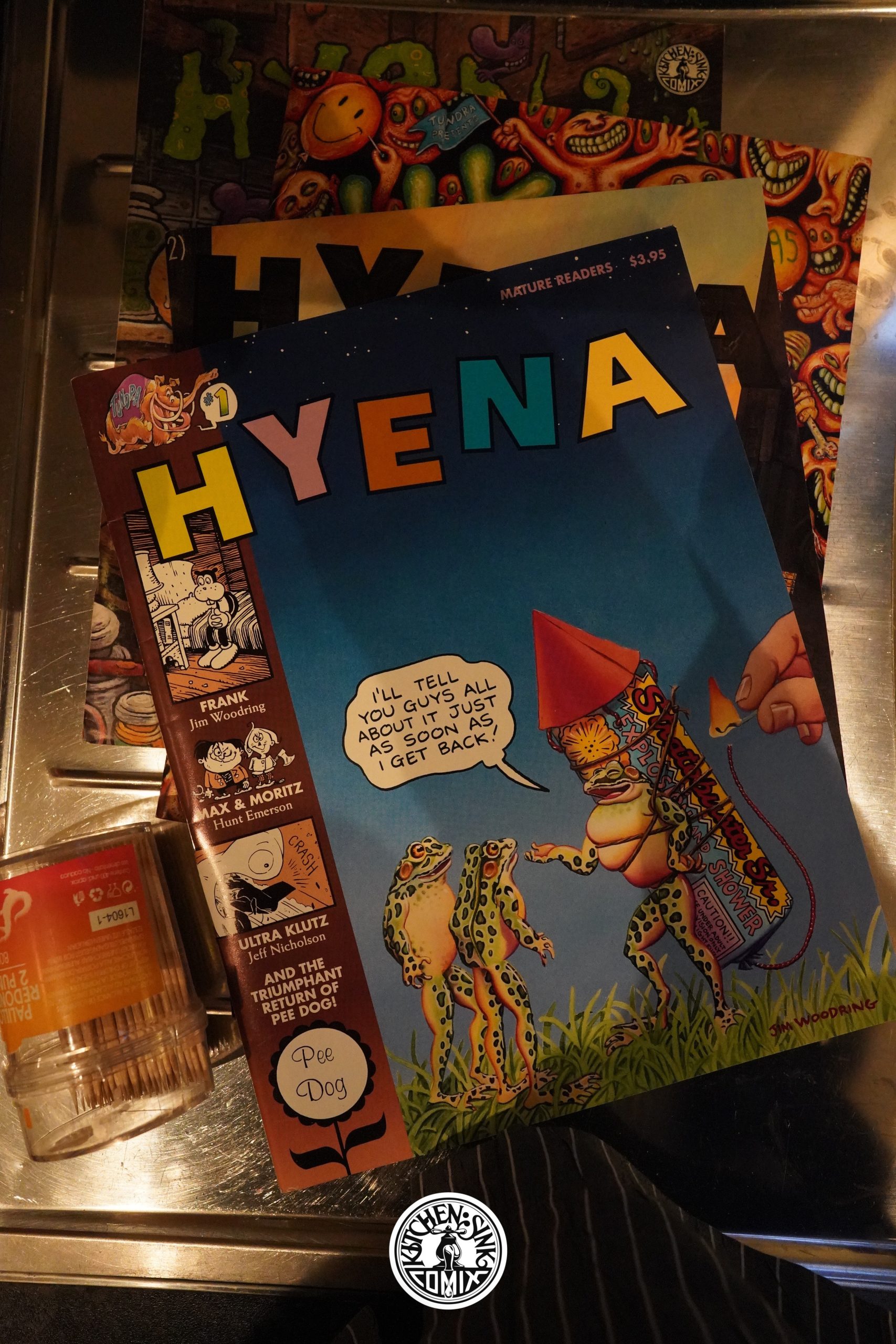
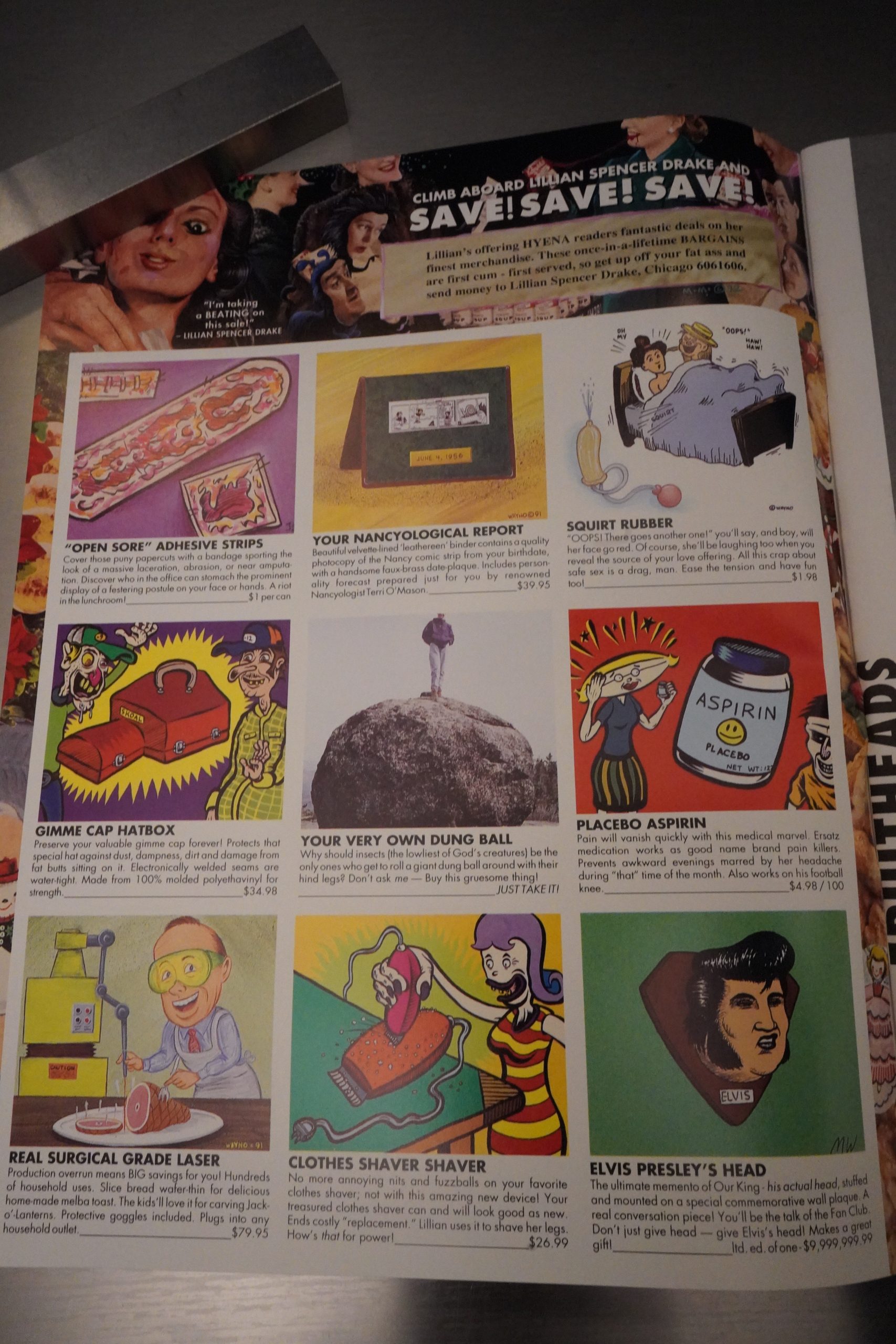
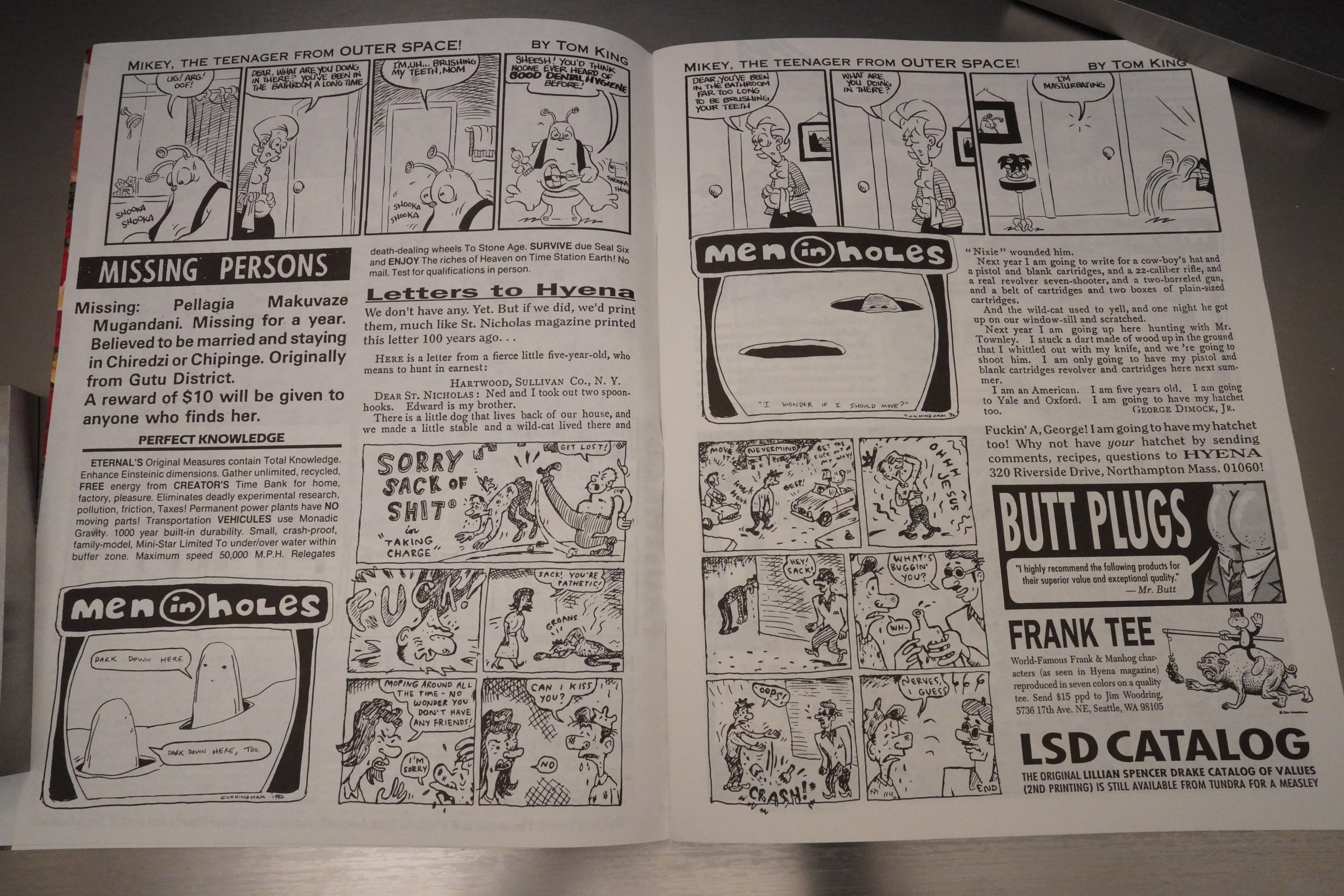
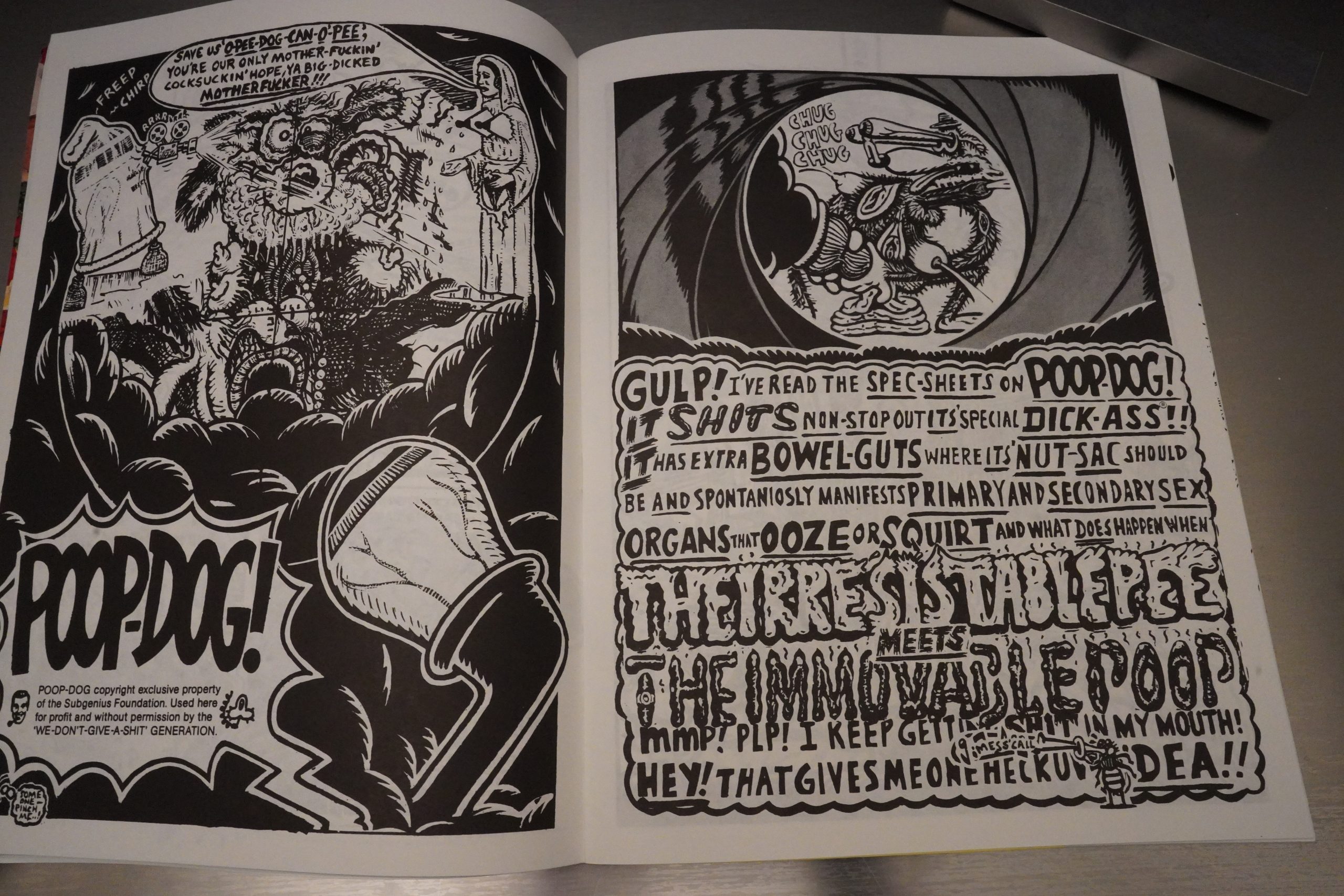
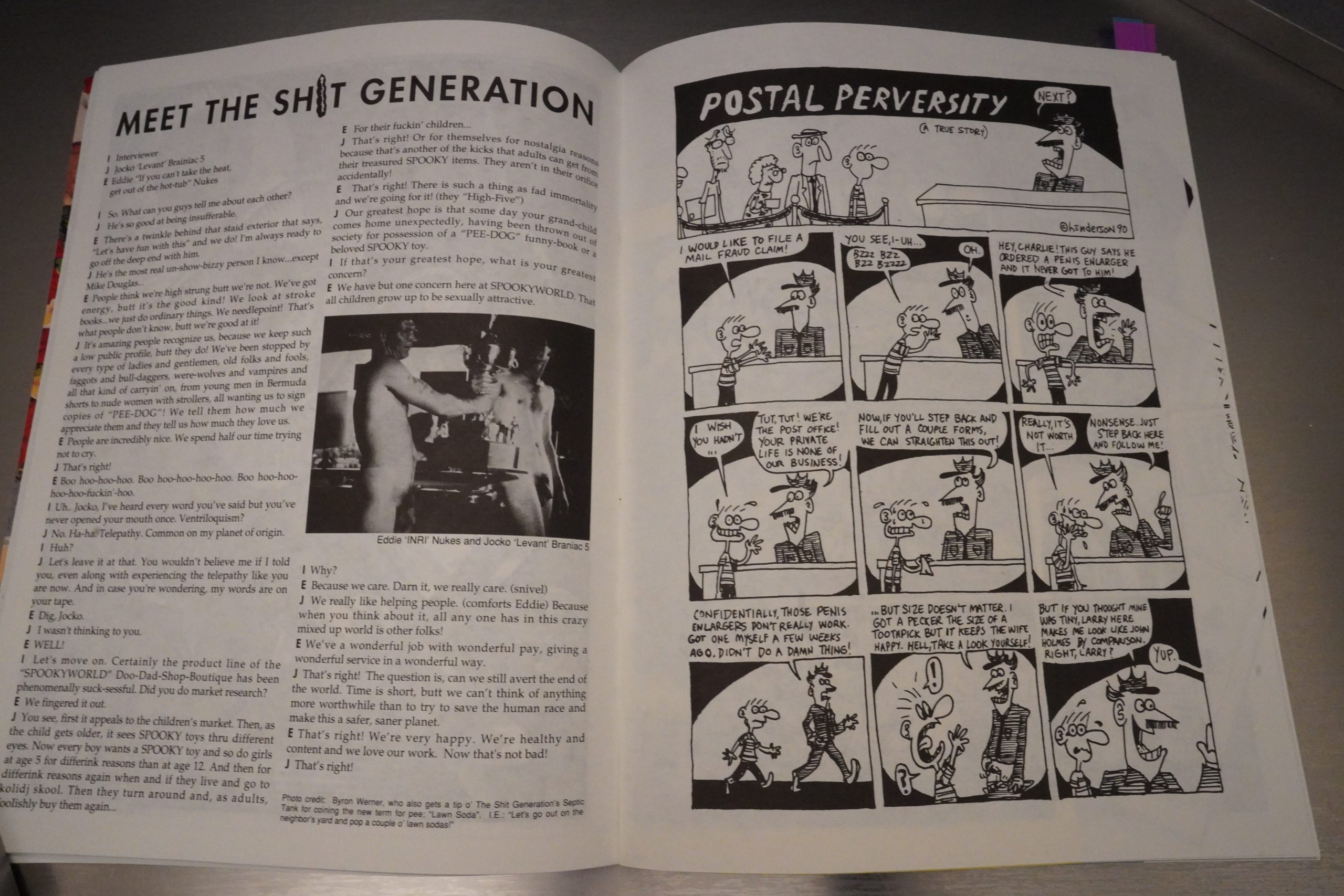
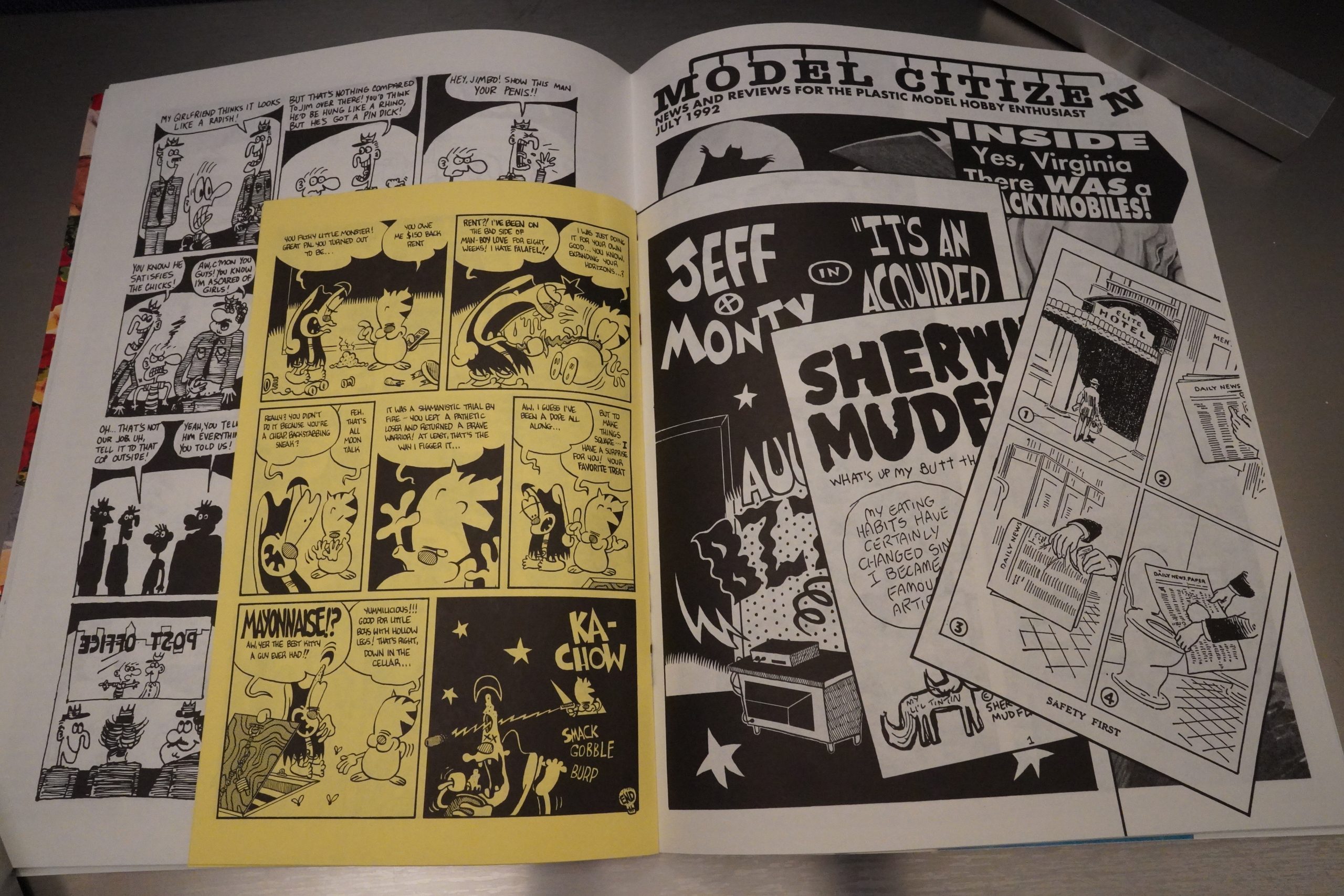



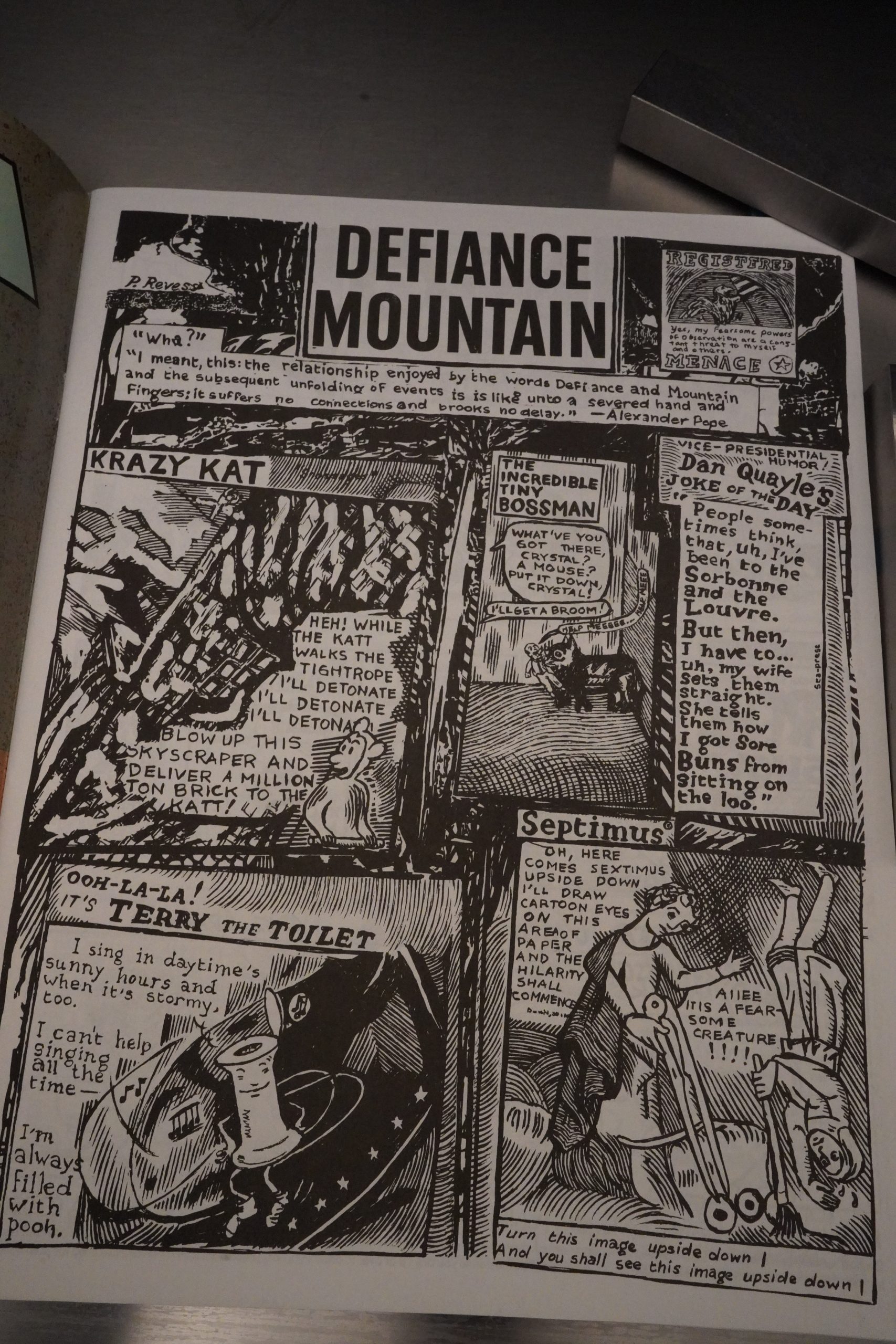

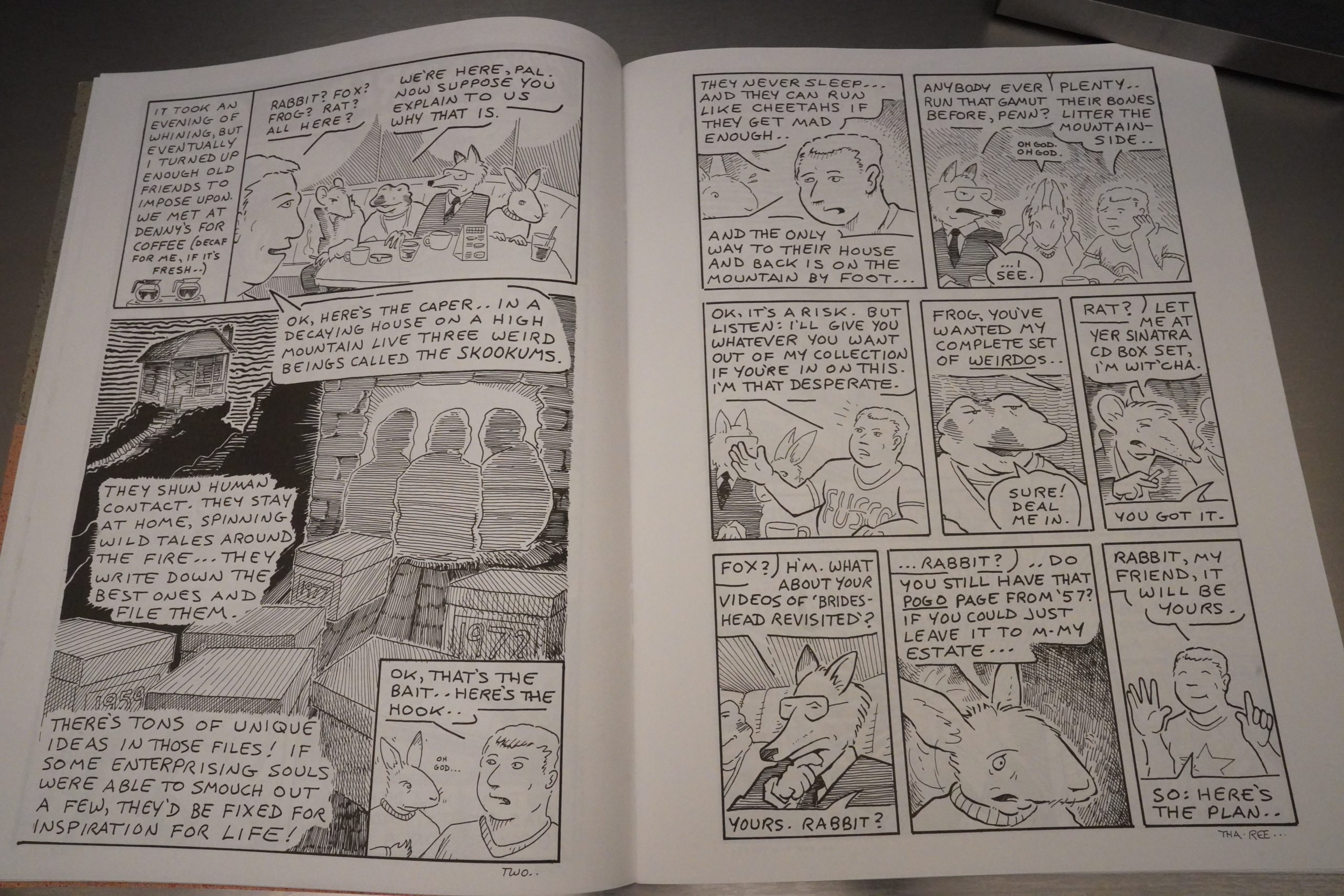
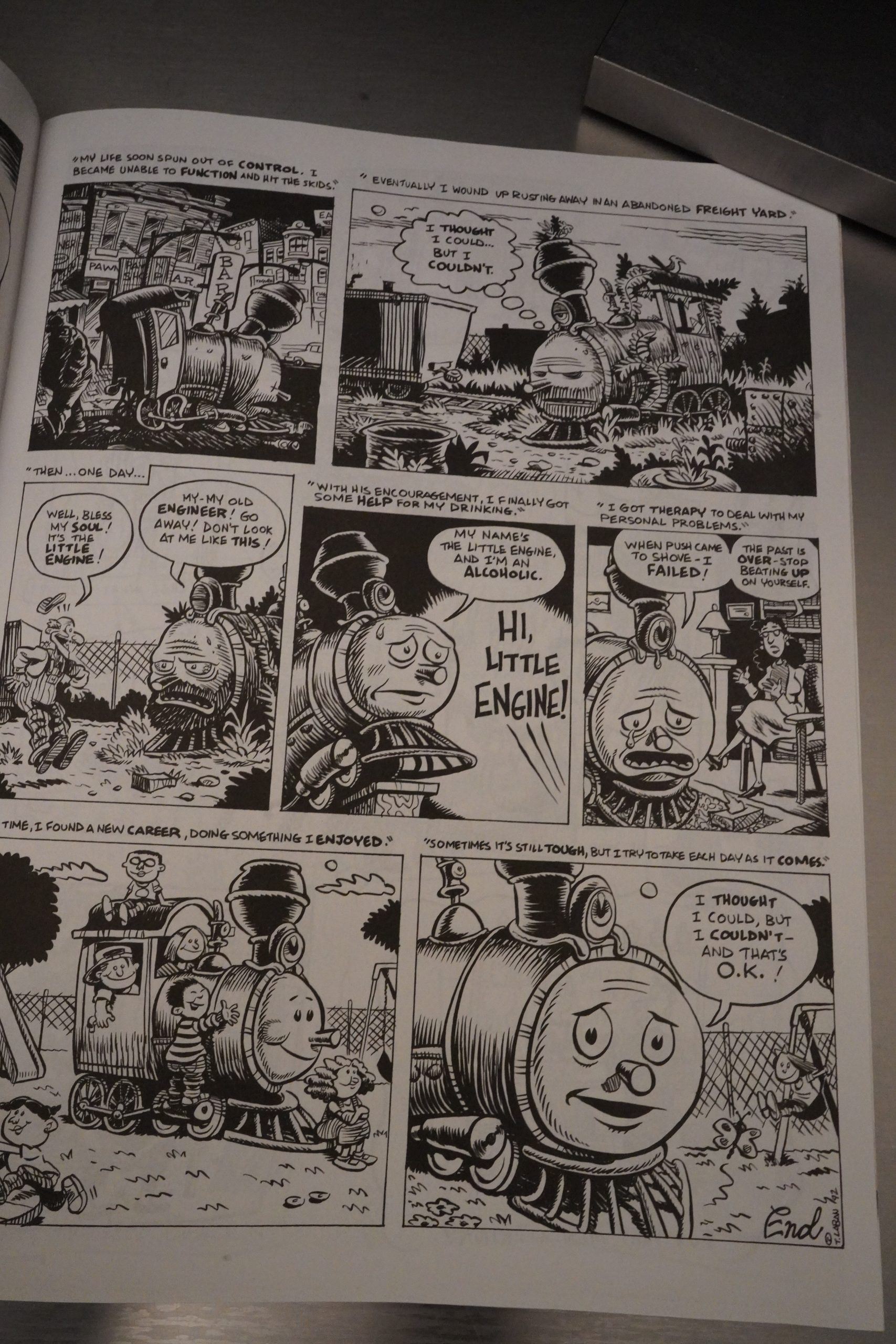
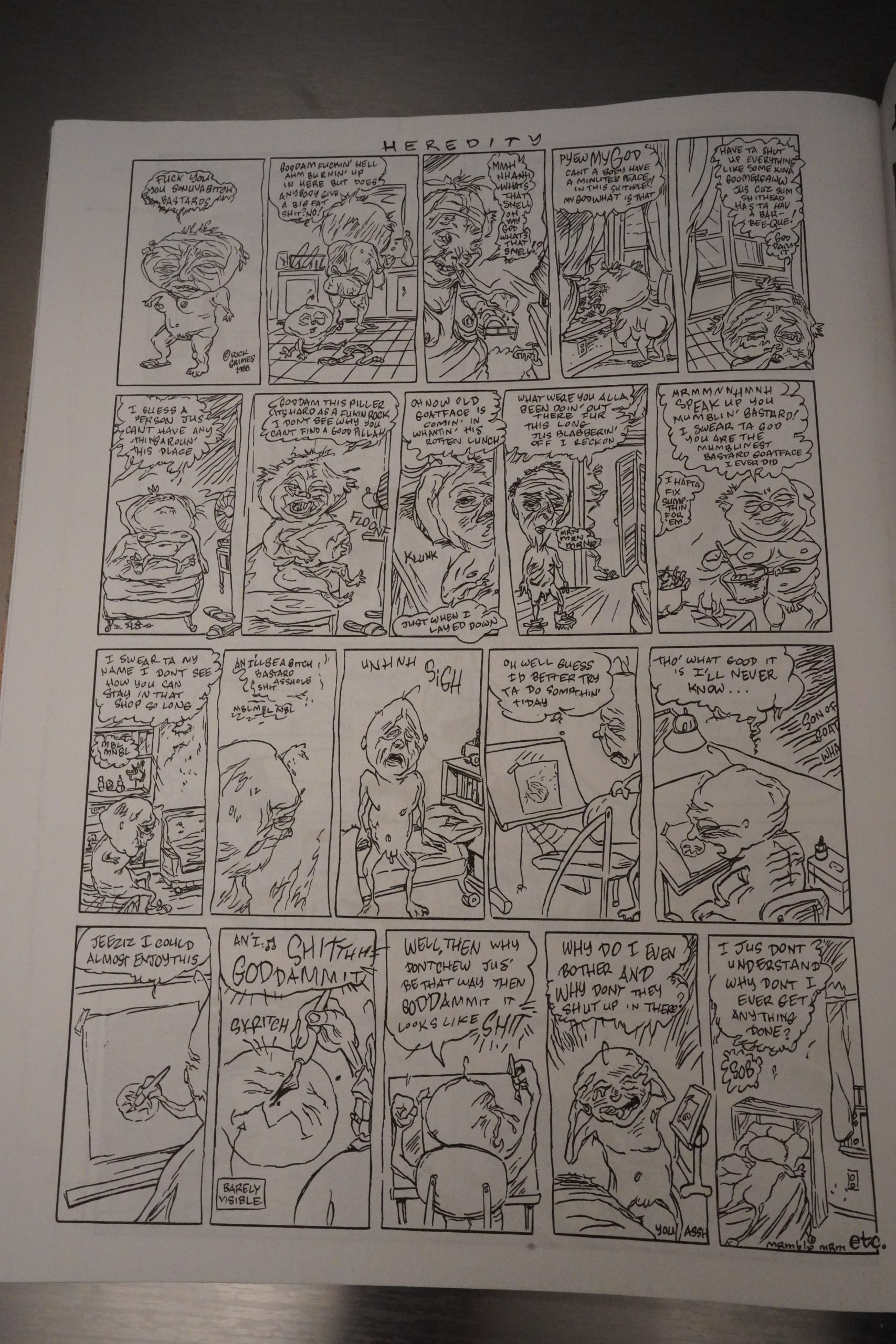
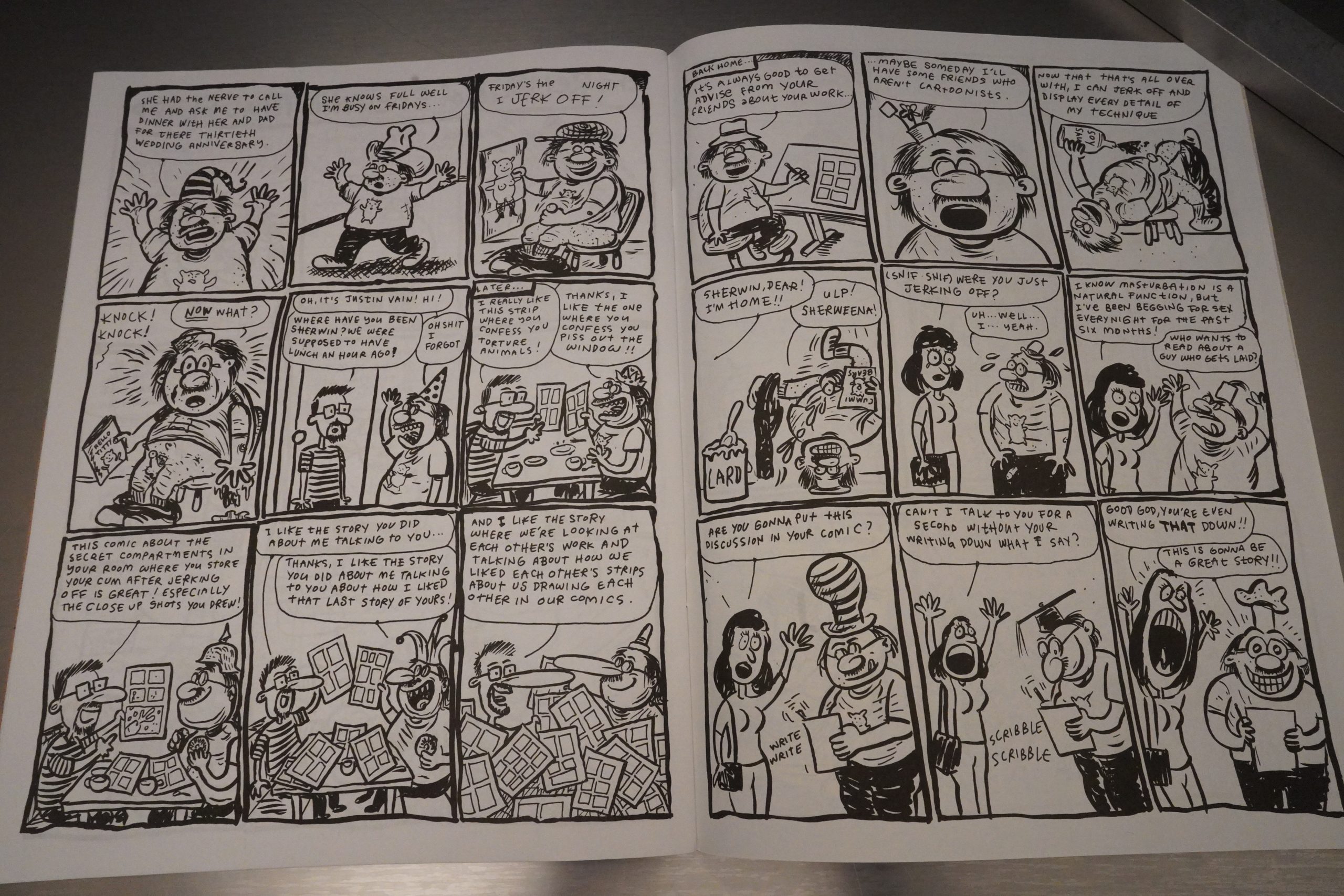
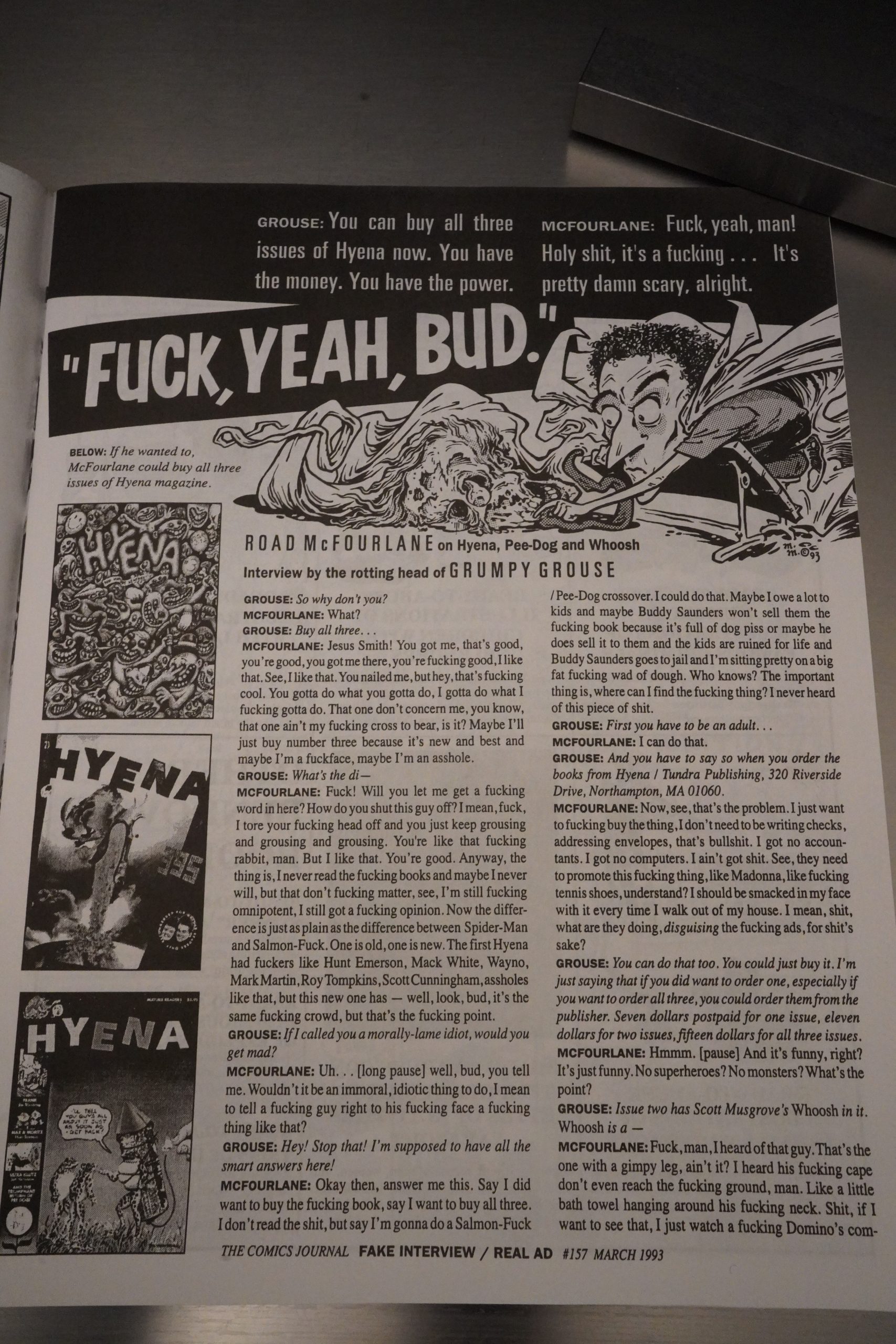
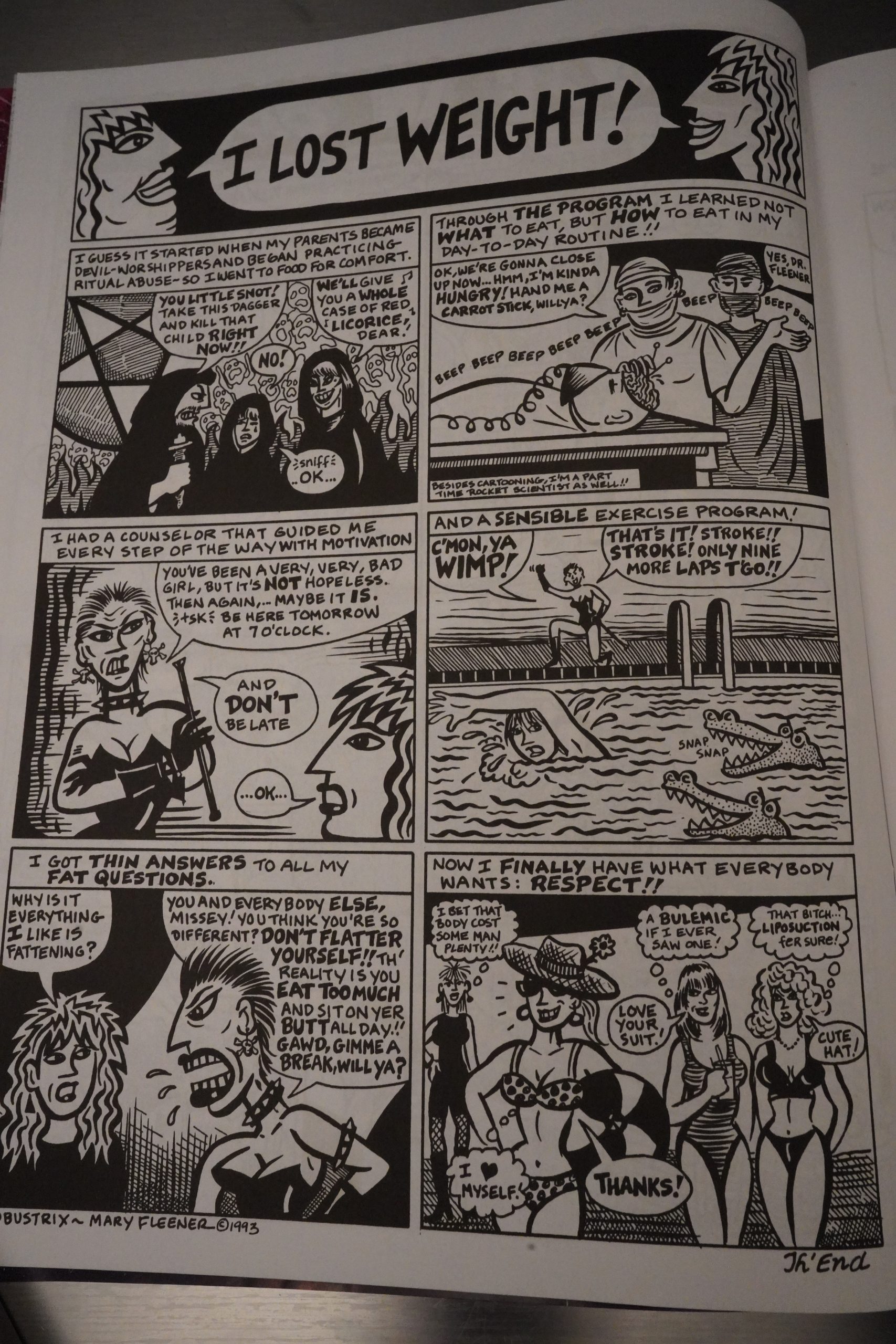

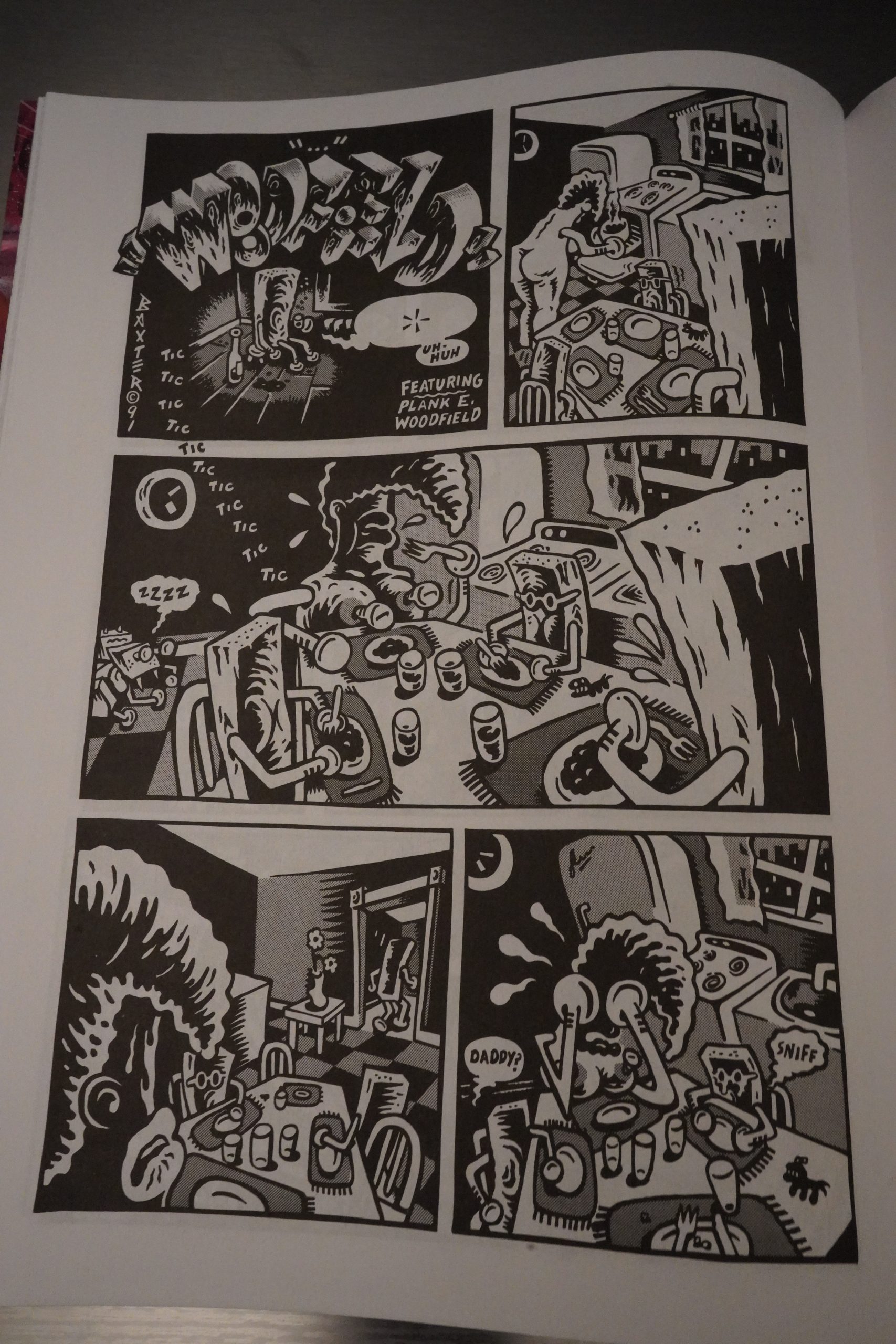
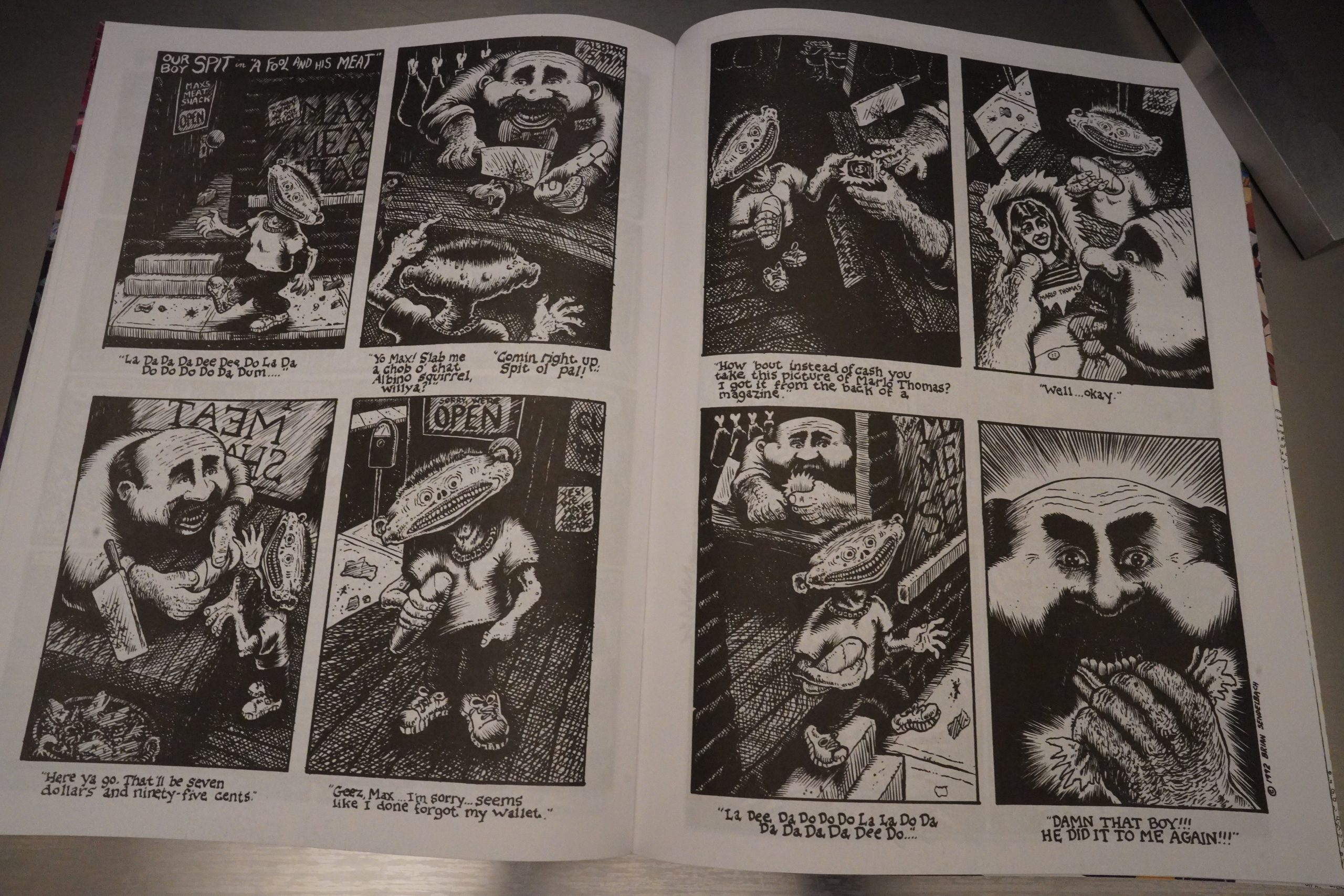
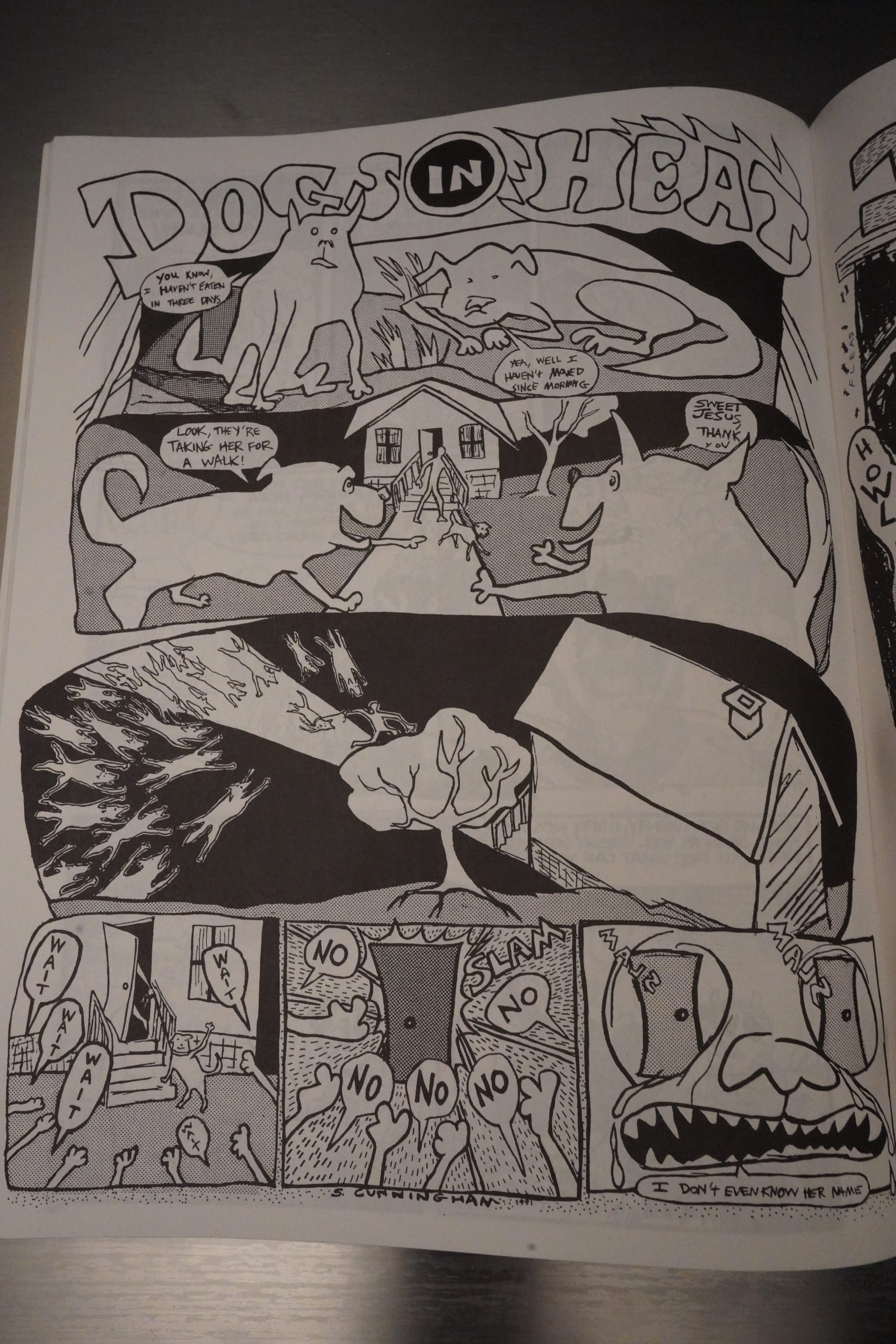
Just wanted to comment on your question posed about the “Joe Matt/Chester Brown/autobio parody” I could be way off but I thought Jonny Ryan right off the bat and then along with the name “Sherwin Mudflapp” seems very on brand! 😛
First time commenting but love all of your posts. Gotten through most of your backlog now trying to keep up regularly! Thanks for the great content
Thanks! But… hm.. “Sherwin Mudflapp” does sound a bit like Ryan, but had he started publishing in 1993? He’d have been 23 at the time, and the artwork’s quite accomplished…
hmm yeah I guess you’re right.. Read an interview that said he started doing Angry Youth (mini) Comix in 92 but tjc says “He started his career in ’94 with a thing called Angry Youth Comix”… oh well, you’re probably right, but now its going to bother me haha
Sherwin Mudflapp looks like Ivan Brunetti to me.
Oh, yeah, that makes sense.